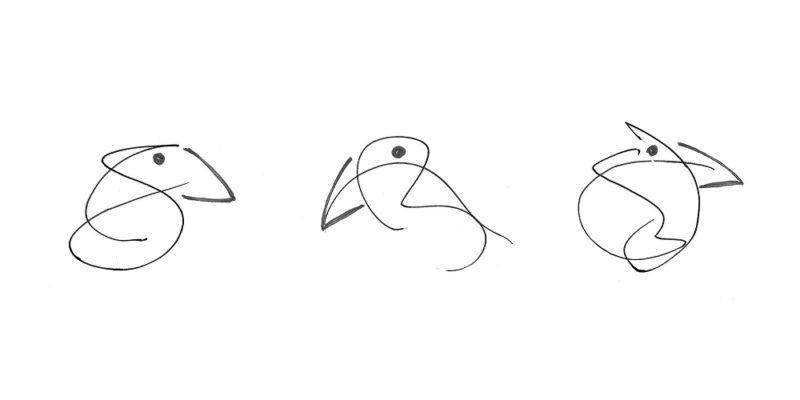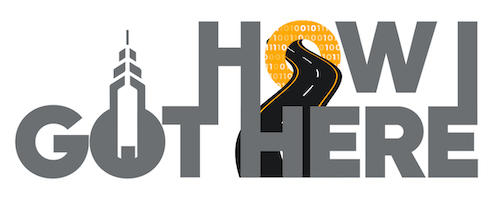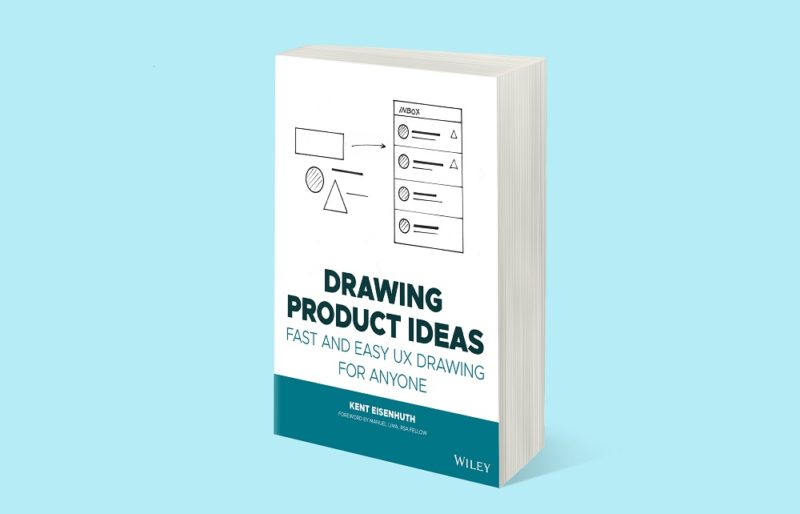A lifelong artist and now designer for Google, Wynnewood-based Eisenhuth is so passionate about these topics that he wrote a book about it: “Drawing Product Ideas: Fast and Easy UX Drawing for Anyone.” Technical.ly and UX group PhillyCHI hosted a Slack AMA with Eisenhuth on Nov. 3, two days after the book’s release, so he could share his expertise on all things UX design and drawing, a give us a sneak peak at the book.
As a kid, Eisenhuth wanted to be an architect but didn’t end up pursuing that field. When he eventually came across UX design, he realized that it involved a lot of the same thinking as architecture.
“What I loved about architecture was designing [a space] for someone to live or spend quality time in. With that came many design challenges. How does someone live in the space? What is their lifestyle like, etc? Then creating something based on those needs,” he said. “On the UX side, product requirements draw a striking resemblance to some of those same challenges.”

Kent Eisenhuth. (Courtesy photo)
For those of us interested in the technical parts of drawing, Eisenhuth said he’s “dabbled” in watercolor painting, pastels and other fine art mediums, but pen and ink were media he started using specifically for UX.
“The book focusses on how I applied tips I picked up during my time dabbling in fine art and how you can apply those same ideas to create more refined drawings, without a lot of effort,” he said.
Kieran Riley Abbott from PhillyCHI commented that she related as a former art major-turned-UX designer.
“I actually realize now that I’m not using those fundamental drawing skills enough and moving too quickly to digital,” she said.
Eisenhuth said he prefers to draw with a pen and paper rather than digitally because the physical act of drawing gives your brain more time to think about what it’s doing. He said it also appears more “undeveloped” so he can usually get more feedback from hand-drawn designs than digitally produced ones from non-UX people.
“Sometimes the things that aren’t drawn, the spaces between lines, the unfilled shapes leaves more to the imagination and invites discussion,” he said.
Newark-based Blue Blaze Associates’ Sandy Taccone commented that in drawing classes, instructors have you start with a blunt piece of charcoal on a big piece of paper to keep your drawing imperfect.
“I think hand sketching keeps you loose so you can get an idea down, digital tools tend to make me tighten up, and get too rigid (perfectionist) too quickly,” she said.
A client may like a hand-drawn design, but be unsure once it’s digital, but Eisenhuth said its important to know your audience in this case.
“I leverage annotations and other elements in the design presentation to make it real. Focusing on the right time and place for drawings is important if the focus of the design presentation is on finer details, then wireframes is definitely the way to go,” he said.
Eisenhuth is a staunch believer that anyone can draw. Young children draw without any cares or worries, he noted, but at some point, that stops for people if someone tell them they aren’t “good” at it. For UX design, the drawing doesn’t have to be beautiful or realistic; it can employ simple shapes and lines to communicate an idea.
An example of an exercise Eisenhuth uses to loosen up the tentative is to draw random squiggles and then add dots and wedges to turn the squiggles into a bird:

Examples of the squiggly line exercise. (Courtesy image)
Drawing is a “timeless and inexpensive tool” and he said one reason why he wrote his books was to “make sure drawing isn’t a barrier of entry for others to fully engage and participate in the process.”
Eisenhuth’s book is available for purchase now on Amazon.
Sarah Huffman is a 2022-2024 corps member for Report for America, an initiative of The Groundtruth Project that pairs young journalists with local newsrooms. This position is supported by the Lenfest Institute for Journalism.
This editorial article is a part of How I Got Here Month of Technical.ly's editorial calendar.
Join our growing Slack community
Join 5,000 tech professionals and entrepreneurs in our community Slack today!
Donate to the Journalism Fund
Your support powers our independent journalism. Unlike most business-media outlets, we don’t have a paywall. Instead, we count on your personal and organizational contributions.

Traditional PPE isn’t made for everyone. Here’s how one startup is fixing it.

Comcast introduces ultra-low lag Xfinity internet that boosts experiences with Meta, NVIDIA and Valve

This Canadian startup with a network of 100,000 is helping international college students find their careers


